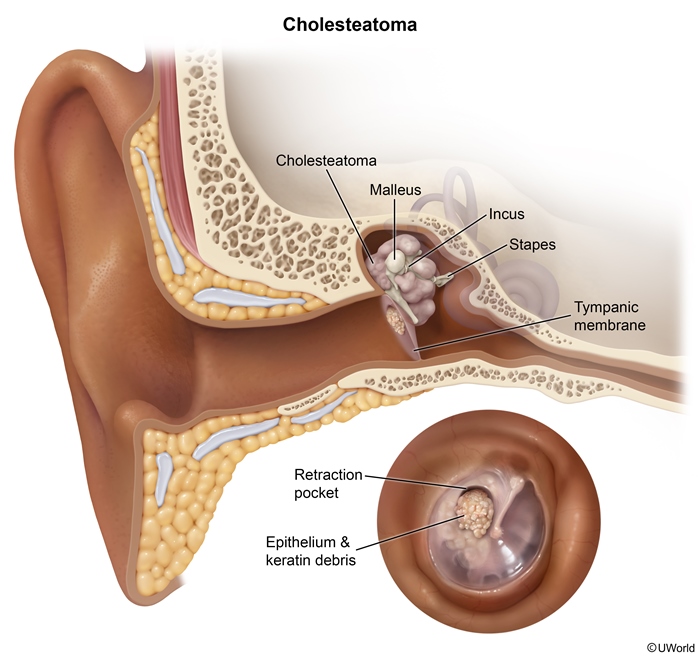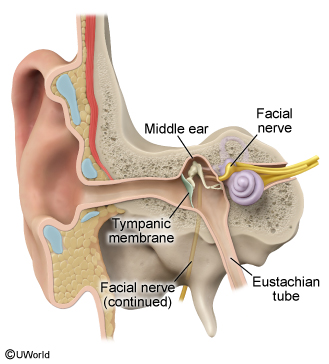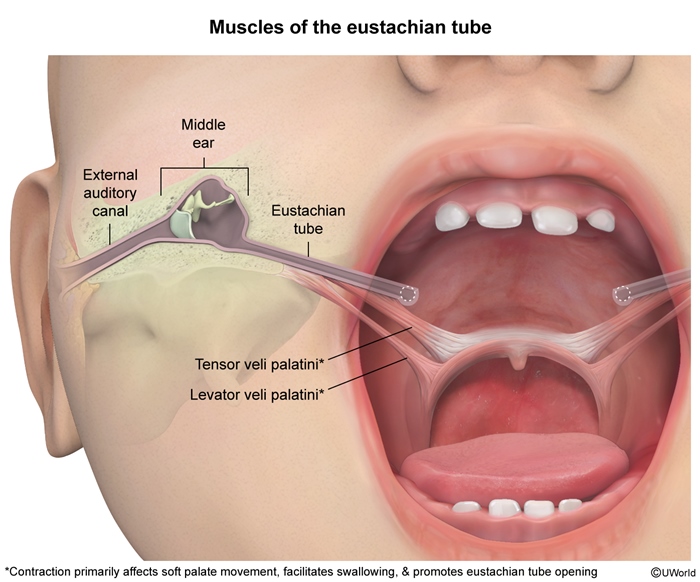Cholesteatoma
Article Sections
Introduction
A cholesteatoma is an abnormal, benign accumulation of squamous epithelium within the middle ear and mastoid. If undetected, progressive accumulation can erode nearby structures, resulting in complications such as conductive hearing loss and cranial nerve palsies.
Pathophysiology
A small percentage of cholesteatomas are congenital and occur in children with an intact tympanic membrane and no prior ear surgery. However, the majority (~95%) of cases are acquired, occur unilaterally, and typically develop as a complication of middle ear disease.
The most common way that a cholesteatoma develops is from the formation of an invagination of the tympanic membranes, known as a retraction pocket (Figure 1). A retraction pocket develops due to chronic negative pressure in the middle ear (from recurrent infection, eustachian tube dysfunction), which causes a focal collapse (or pocket) in the tympanic membrane. As the pocket enlarges, it can become a deep pouch and allow squamous epithelium and keratin debris to accumulate, creating the cholesteatoma.
Continue Learning with UWorld
Get the full Cholesteatoma article plus rich visuals, real-world cases, and in-depth insights from medical experts, all available through the UWorld Medical Library.
Figures


